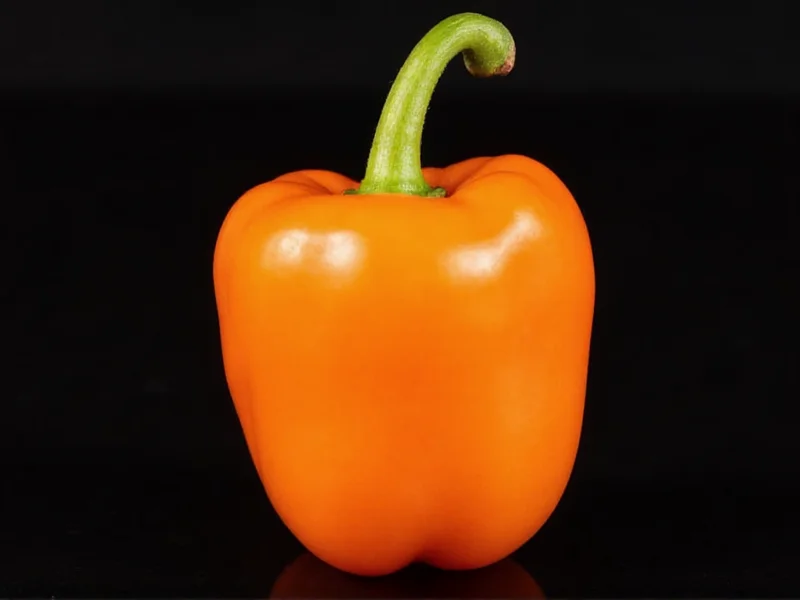The habanero pepper typically measures between 100,000 and 350,000 Scoville Heat Units (SHU), placing it among the world's hottest edible peppers. This fiery fruit's heat level can vary significantly based on growing conditions, specific variety, and even individual pepper characteristics.
Understanding exactly how hot is the habanero requires context within the broader spectrum of chili pepper heat. The Scoville scale, developed by pharmacist Wilbur Scoville in 1912, remains the standard measurement for capsaicin concentration—the compound responsible for a pepper's burn. While habaneros consistently rank as extremely hot, their position on the scale reveals important distinctions from other popular peppers.
Decoding the Habanero Heat Range
When evaluating how hot is the habanero pepper, it's crucial to recognize the significant variation within this category. The standard orange habanero generally falls in the 100,000-350,000 SHU range, but specific varieties demonstrate notable differences:
| Habanero Variety | Scoville Heat Units | Compared to Jalapeño |
|---|---|---|
| Standard Orange Habanero | 100,000-350,000 SHU | 20-70x hotter |
| Red Savina Habanero | Up to 580,000 SHU | Nearly 120x hotter |
| Chocolate Habanero | 400,000-450,000 SHU | 80-90x hotter |
| White Habanero | 150,000-300,000 SHU | 30-60x hotter |
Habanero Heat Compared to Common Peppers
Contextualizing habanero pepper Scoville scale measurements against familiar peppers helps understand their intensity:
- Jalapeño (2,500-8,000 SHU): Habaneros are 20-70 times hotter
- Serrano (10,000-23,000 SHU): Habaneros are 8-35 times hotter
- Cayenne (30,000-50,000 SHU): Habaneros are 3-10 times hotter
- Scotch Bonnet (100,000-350,000 SHU): Similar heat range to standard habanero
- Ghost Pepper (855,000-1,041,427 SHU): Significantly hotter than most habaneros
Many people wonder is habanero hotter than cayenne—the answer is definitively yes, with habaneros typically registering 3-10 times the heat level of cayenne peppers.
Factors Influencing Habanero Heat Levels
Several elements affect habanero heat level chart variations:
Environmental Conditions
Stressors like inconsistent watering, temperature fluctuations, and nutrient deficiencies can increase capsaicin production. Counterintuitively, peppers grown in less-than-ideal conditions often develop higher heat levels as a defense mechanism.
Genetic Variations
Different habanero cultivars have distinct genetic profiles affecting their maximum potential heat. The Red Savina variety, once recognized as the world's hottest pepper, demonstrates how selective breeding can intensify heat.
Maturation Stage
As habaneros ripen from green to their final color (typically orange or red), their heat increases. Fully mature peppers contain higher capsaicin concentrations than their younger counterparts.
Practical Implications of Habanero Heat
Understanding how hot are habanero peppers compared to jalapeno has real-world consequences in the kitchen:
Safe Handling Practices
Always wear gloves when handling habaneros and avoid touching your face. The oils can transfer to sensitive areas, causing significant discomfort. Never use plastic bags for storage—habanero oils can permeate thin plastics.
Culinary Applications
Due to their intense heat, habaneros work best when:
- Used sparingly in salsas and hot sauces
- Added early in cooking processes to distribute heat evenly
- Combined with acidic ingredients like lime juice to balance heat
- Paired with sweet elements (mango, pineapple) to create complex flavor profiles
Common Misconceptions About Habanero Heat
Several myths persist about what makes habanero peppers so hot:
- Seeds contain most of the heat: Actually, the highest concentration of capsaicin exists in the white pith (placenta) surrounding the seeds.
- Color indicates heat level: While color correlates with ripeness, it doesn't reliably predict heat—orange and red habaneros can have similar SHU ratings.
- All habaneros are equally hot: Individual peppers from the same plant can vary dramatically in heat intensity.
Habanero vs. Scotch Bonnet: A Heat Comparison
Many confuse these two peppers, but habanero vs scotch bonnet heat comparison reveals subtle differences. While both register between 100,000-350,000 SHU, Scotch Bonnets typically have a slightly fruitier flavor profile with marginally less intense heat. Their distinctive shape (Scotch Bonnets are more rounded) and regional cultivation differences (Scotch Bonnets dominate Caribbean cuisine) further distinguish them.
Measuring Habanero Heat Accurately
Modern laboratories use High-Performance Liquid Chromatography (HPLC) to measure capsaicinoids precisely, replacing Scoville's subjective human tasting method. This scientific approach provides exact ASTA pungency units, which can be converted to Scoville units (1 ASTA unit = 15 SHU). This technology explains why we now recognize such wide variation in habanero pepper varieties and heat levels.











 浙公网安备
33010002000092号
浙公网安备
33010002000092号 浙B2-20120091-4
浙B2-20120091-4